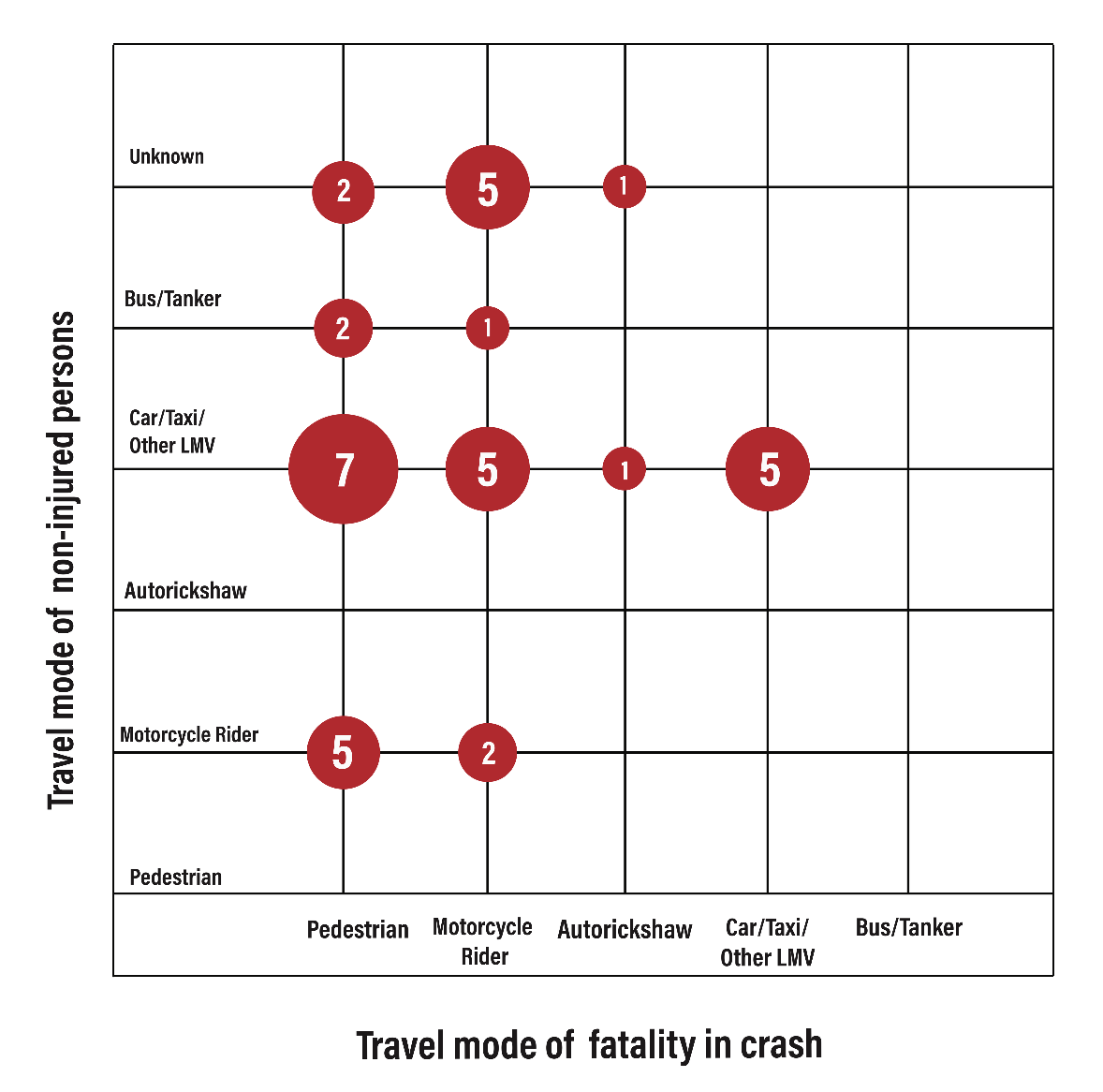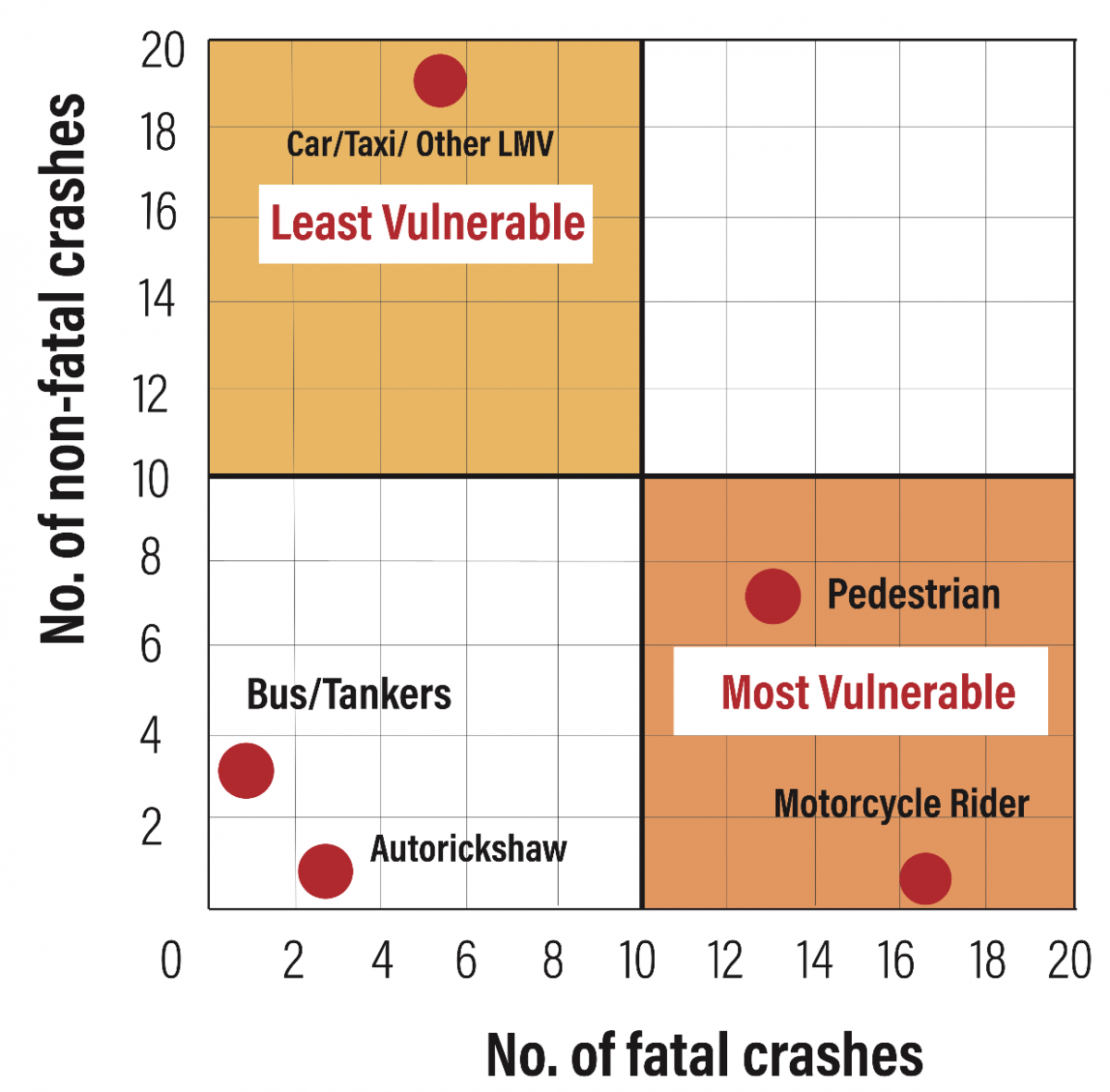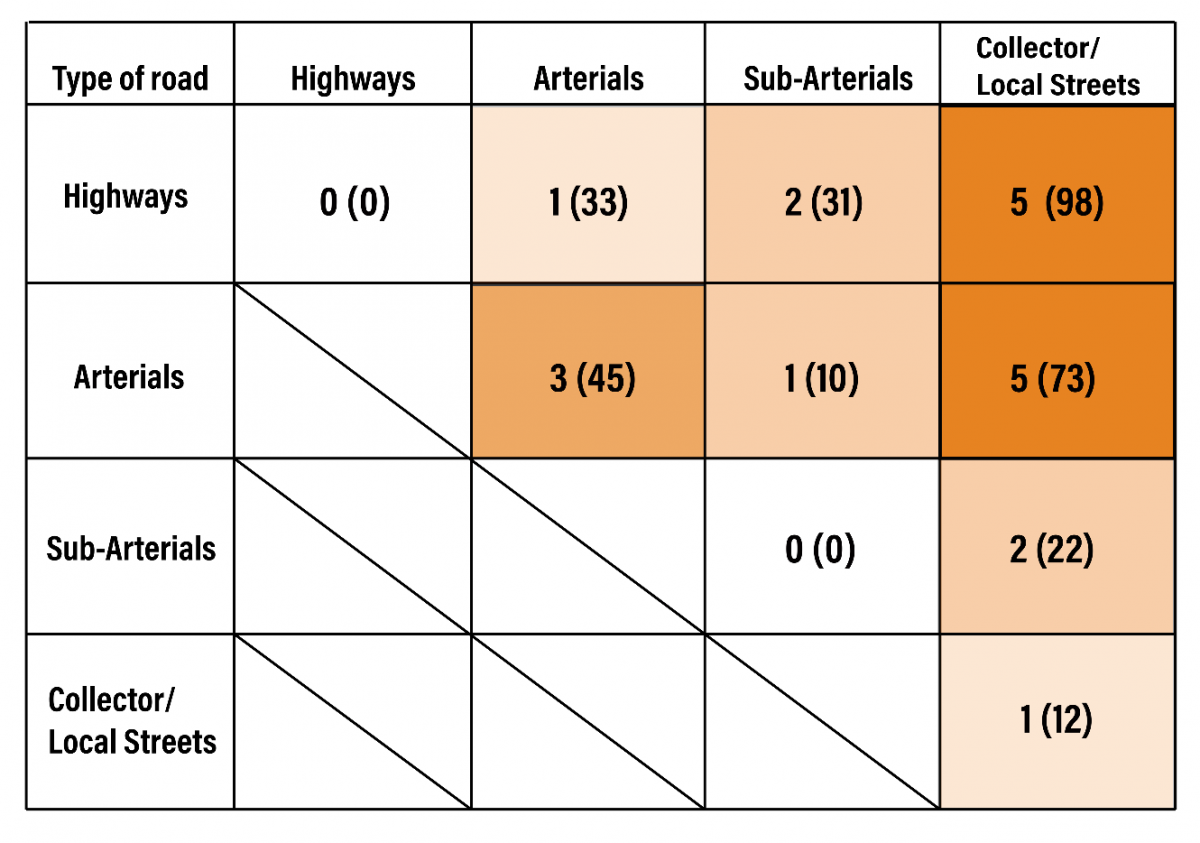Better Intersection Design Can Save Lives
by e -Intersections are locations where roads merge or cross each other, thus putting multiple modes of traffic from different directions into potential conflict. Although they cover only a fraction of the 2000 kilometre long road network in Mumbai, they account for nearly 40 percent of all high risk zones, or blackspots, in the city. They are also where almost a third of all road traffic fatalities occur. What is even more alarming is that more than half of these fatalities are pedestrians.
Earlier this year, the Mumbai Traffic Police and Vital Strategies, under the Bloomberg Initiative for Global Road Safety, released a report identifying 52 blackspots in Mumbai. We analysed this data to better understand the current scenario. Here are the top three findings:
 Figure 1 - Intersection Fatal Crash Type Distribution
Figure 1 - Intersection Fatal Crash Type Distribution
Being A Pedestrian Is Dangerous
Most crashes take place between cars and pedestrians, followed by cars and motorcycle riders and finally, between cars only (see Figure 1). While people travelling in cars are less likely to die in a road crash, pedestrians and motorcycle riders are more likely to lose their lives in a crash, making them the most vulnerable of all road users (see Figure 2). This is especially disturbing in a city where walking is the predominant travel mode for more than 51 percent of the city’s population. Inadequate pedestrian infrastructure such as missing pedestrian crossings, lack of pedestrian refuges, and poor quality footpaths, along with misaligned traffic lanes and large intersection areas are some of the factors contributing to high pedestrian fatalities.
 Figure 2 - Vulnerability Matrix for Travel Modes
Figure 2 - Vulnerability Matrix for Travel Modes
Timing And Location Is Everything
Almost 40 percent of the fatal crashes occurring at intersection blackspots take place between 10.00 pm and 4.00 am, despite the significantly lower volume of traffic during this time. Inadequate street lighting, non-functioning traffic lights and speeding vehicles are some of the main factors that could explain this high crash frequency.
In addition, the city’s expressways – the Eastern Express Highway and the Western Express Highway – have 43 percent of Mumbai’s blackspots and account for half of all road crashes.
Some Intersections Are More Dangerous Than Others
Generally, as per standard road planning principles, a local street must not directly intersect with an expressway. Yet, the lack of network planning and judicious application of road hierarchy principles in Mumbai mean that there are several instances of this all across the city, and they are responsible for five of the city’s major blackspots.
From our analysis (seen in Figure 3), two types of intersections emerged as high-risk – that of an expressway with a local street; and of an arterial road with a local street. These high-risk intersections make up about half of the city’s the intersection blackspots and also account for more than half of all crashes. The reason these intersections are so dangerous is because when two roads varying so greatly in their traffic-mix, speed and road width intersect with each other, the potential for conflicts is greatly amplified.
 Figure 3 - Intersection Blackspot Typology Matrix (The first number shows the number of such intersections that are blackspots, while the number in parenthesis show the number of crashes at such intersections)
Figure 3 - Intersection Blackspot Typology Matrix (The first number shows the number of such intersections that are blackspots, while the number in parenthesis show the number of crashes at such intersections)
The blackspots in this study are only a few of several unsafe intersections in Mumbai. The question of how to design such intersections is critical as there is a multiplicity of design issues which contribute to the high crash risk. Reducing intersection areas, redesigning misaligned travel lanes, providing better pedestrian infrastructure such as protected pedestrian crossings, pedestrian refuges and continuous footpaths and improving street lighting at known blackspots are some of the ways in which these dangerous zones can be made safer. Ultimately, the primary guiding principle while designing these intersections has to be safety first, where human life cannot be compromised at any cost.


